Driving into Split on the main road from Trogir, you pass by what appears to be a large municipal park with some ruins. Most people are probably too busy watching the traffic to pay much attention. But these ruins are what’s left of Salona, Dalmatia’s largest and most important city two thousand years ago. You’d hardly credit it, even walking around the park, as it’s all very low-key, most visitors seem to be locals walking their dogs. On the day we visited, there were few other tourists, and it’s possible to enjoy the place in peace, connecting with its ancient past.
Salona was originally a fortified Illyrian settlement on the shore of a wide bay, where the river Jadro flows into it. Behind, the coastal mountain range rises steeply, protecting from any land attack. The Greek colonists from Issa (Vis) established a trading post nearby in about 3rd century BCE. As the Romans invaded the area, possession of Salona and the other settlements in the area went back and forth, eventually all being absorbed into the Roman Empire. Because of its strategic position, Salona grew first into a colony, and by 9 BCE, became the capital city of the province of Dalmatia.
As the administrative centre of a large Roman province, Salona became extremely prosperous. Great new public buildings went up – a theatre, baths, a forum and a large amphitheatre. The old city walls had to be expanded and new impressive towers and gates were added. A new aquaduct brought fresh water from Jadro springs. At its height, the population of Salona is estimated at around 50,000. That’s a lot of people! Makes me think of historian Mary Beard’s description of the dense housing in Roman towns, with 3-story apartment blocks. Interesting thought as you look at the remaining walls, and mentally project them upwards!
Around the year 244, Diocles was born in or around Salona to an Illyrian family. They weren’t well off, his father was a scribe and mother a freed slave. But Diocles went on to become the Emperor Diocletian, the only Roman Emperor to retire with his life still intact. He built himself a palace at Spalato, on the coast near Salona. Apparently he wanted easy sea access so he could escape if attacked!
Salona also had its own mint, connected with the silver mines in the Dinaric Alps by the Via Argentaria. In fact Salona was very well connected by the Roman road system. The Tabula Peutingeriana map from the 5th century provides wonderful detail, which some helpful person has now overlaid onto Google maps (www.omnesviae.org ) so that you can plan your route across Europe via old Roman roads! From London to Salona, for example, is MCXXXIX (1139) miles, and the journey would take me LXXVI (76) days). How cool is that!
Salona remained as a Roman city into the 5th and 6th centuries, becoming an important centre for early Christians in the area. A number of later buildings are fine examples of early Christian church architecture, with their accompanying graveyards. Some of the finest marble sarcophagi are now in the Archaeological Museum in Split.
The old city was finally abandoned in the 7th century, when it was destroyed by the incoming Avars and Slavs. Its people fled to the islands, or to the shelter of Diocletian’s fortified palace, where they built the core for the city of Split.
The entry to Salona for modern day travellers is at Manastirine. You can leave your chariot there and follow the path back in time. A helpful map is provided so you can orient yourself and know what you’re looking at. It’s not easy, as the old Roman city is overlaid with later buildings, olive groves, vineyards, roads, etc.
The next building after Manastirine is the local branch of the Archaeological Museum, built in 1898 with its somewhat random use of ancient stonework as ornamentation! Some of these are finds from Salona, others come from the old belfry of Split cathedral. Tusculum was commissioned by Father Frane Bulić, who was passionate about preserving the ancient heritage, and one of the great pioneers of archaeology in Croatia.
One of the rooms in Tusculum is set up in Roman style as a memorial to Father Frane Bulić in recognition of his pioneering research and archaeological work at Salona. It includes original furniture from his time, along with some of his personal belongings.
Outside, there is a shady garden with more of the finds from Salona on display. Adjoining the garden are museum offices, and a workshop with reference library for researchers.
This gives you an idea of the full glory of Tusculum, from when it was newly built! There’s a lovely series of early photochrome pictures from the late 1890s, early 1900s that show visitors to Salona. The site looks remarkably similar – except for the lack of modern tower blocks in the distance!
The oldest part of Salona still standing is a section of the city wall, and Porta Caesarea (Caesar’s Gate), which dates from the first Roman phase. This was the old entrance to the city and very impressive it is, with massive octagonal towers. There’s a walkway for pedestrians to each side of the main paved road for vehicles.
Talking of vehicles, remarkably the old gate is still is use as local access to the olive groves and vineyards is through that way. Here comes a tractor on its way back from the fields!
As the city grew, it spread out east and west from Caesar’s Gate, so it was no longer the main entrance but somewhere in the middle.
It’s a remarkable feature of Roman towns that the necropolis was always on the way out of town, never within the walls. Makes sense not to waste space, but the effect is that heading out of town takes you past an assortment of stone sarcophagi. You can actually experience what that would have felt like when you follow the old road towards Trogir. Lovely way to start a journey!
The most famous necropolis in Salona is the horto Metrodori on the way westwards to Tragurium (Trogir), where large stone blocks were used in the construction.
In the second phase of building to the east of the Porta Caesarea are the great public baths. This looks to have been a large complex, with atrium, changing rooms, various small pools and a large semicircular pool.
And, of course, underneath you have the channels supplying the water at the right temperature for each of the hot, warm and cold pools. Very civilized!
The way out of the city to the east led across the Five Bridges.
On the east side of the Port Caesarea is the main Basilica, a large complex of early Christian buildings. Beyond it, you can see the Roman baths.
The Baptistry is octagonal, still has much of the paving in place. The baptismal pool is the cruciform shape, same as the one at St John’s church in Stari Grad on Hvar.
Over on the western side of the city, nearer to the bay, was where the forum and the theatre were located. The theatre is one of the features that is most visible from the (modern) road into Split. In its day, this theatre could hold 3,500 people.
The theatre is also visible on Trajan’s Column, that glorious piece of stone artwork commemorating the Emperor Trajan’s victory over the Dacians. The representation of Salona for his arrival in a Dalmatian harbour is fairly stylised, but the buildings and those arches seem quite distinctive!
The biggest of the ruins at Salona is the large elliptical Amphitheatre, dating from the second century. It’s said that it held up to 20,000 spectators, which would be about half the cities population. It survived in good shape for over a thousand years, but sadly the Venetians saw fit to destroy it in the 17th century to prevent the Turks from using it as a stronghold. Shame. Must have been a magnificent building.
There’s much more to be seen at Salona, especially from the later phase when this was a base for the early Christian church. We didn’t get to many of those buildings, and I’d really like to read up on the history meantime so I can appreciate what I’m seeing. To be continued…
Salona Information
Tusculum – Regional Section of the Archaeological Museum
Put starina bb, Manastirine – 21210 Solin
Phone/Fax: 021/211-538
Working hours:
- May – October
– Monday – Friday: 7:00 a.m. – 7:00 p.m.
– Saturday: 9:00 a.m. – 7:00 p.m.
– Sunday: 9:00 a.m. – 1:00 p.m. - November – April
– Monday – Friday: 9:00 a.m. – 3:30 p.m.
– Saturday: 9:00 a.m. – 2:00 p.m.
– Sunday closed
Find out more…
commons.wikimedia.org/wiki/Category:Salona
www.mdc.hr/split-arheoloski/eng/FS-dislocirani.html
en.wikipedia.org/wiki/Tabula_Peutingeriana

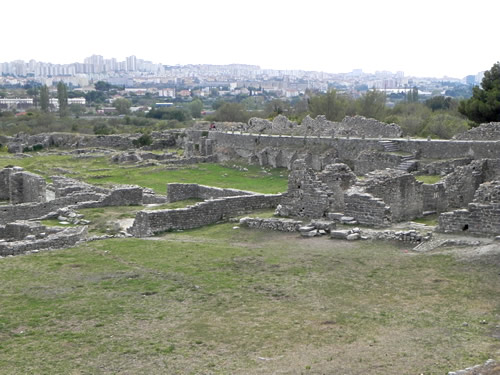






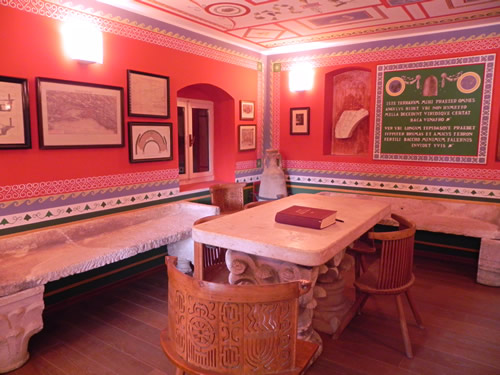




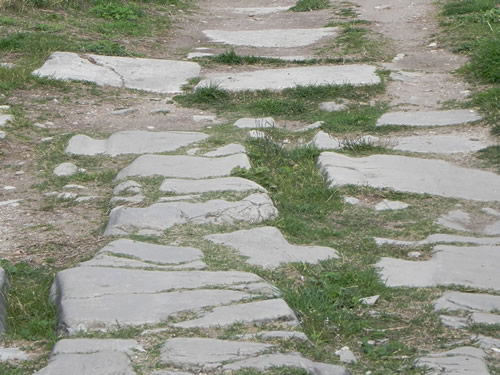

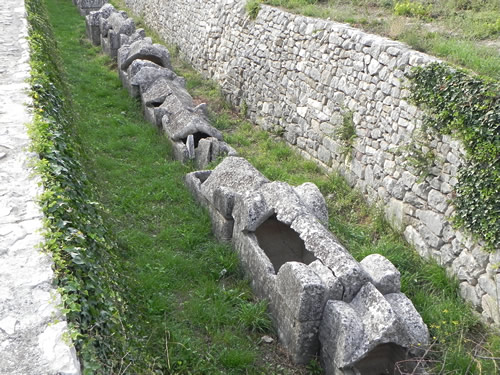



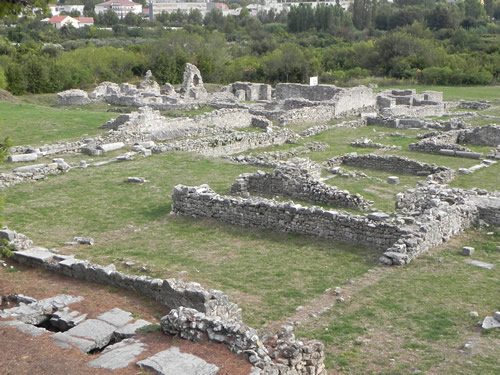



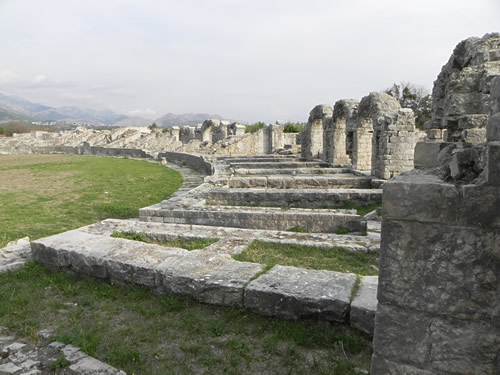




great and informative post!
Thank you! And thanks for the reblog – looking forward to reading about your renovations and adventure in Trogir! Mara
Reblogged this on Our Adventure In Croatia and commented:
What to do near Trogir? visit the ancient Roman city of Salona
Pim, thanks for your kind comments and reblog! I see you have some interesting posts on your local area around Svinisce – looks beautiful!
It is Mara, it is, but so is Hvar no doubt.
My only problem is that there are so many interesting, beautiful places and so much to do.
Caring for all our tomatoes, melons, peppers and herbs 🙂 for instance.
Poz. Pim.
Hi Mara,
think you were looking at “svinisceandmore”, but actually that is just a recent trial.
My real blog is at http://www.svinisce.blogspot.com, more than 350 pages 🙂
Anyway, thanks for checking, hope you find some inspiration in it.
Cheers, Pim.
Pim, it was indeed your blogspot site I meant. Looks like a good source of information about Dalmatia’s inland regions. Have you come across Paul Bradbury and his new Total Inland Dalmatia project? You two ought to connect! Mara
Reblogged this on Croatia, the War, and the Future and commented:
The pulse of history never dies. This one is a beauty
Ina, thanks for the reblog and your kind comments!
Very cool, Marion! We were on a bus tour when we saw Split, so we couldn’t have stopped here even if we’d known about it ahead of time — but NEXT time, maybe we will stop! I love the Roman Road overlay map. How did you come across that link?!
I think some tours include the ruins of salona, but there are just so many other interesting sites to visit nearby! Most people miss this one. As for the ancient routes on Google – it just came up in my searches for info about old roman roads. Isn’t it great?!
Hi Mara,
first of all a huge compliment for this item !
Great pictures, good story, once again a huge compliment.
If interested, see: http://www.vici.org.
The guy who created that stuff is a fellow Dutchman (I’m a Dutchman living in Dalmatia).
Anyway, thanks for a very interesting post, highly advisable information for those visiting this region.
Poz. Pim from Svinisce.
Ps, gonna make a blogpost directing to your pages.